The Birth of a Camioneta (Public Bus), Guatemala
From school bus, to auction house, to workshop, to workhorse.
For most people, the birthing process starts in the quiet, sterile, environment of a delivery room. For a camioneta, it starts in the noisy chaos of an auction room deep in the United States.
U.S. school buses are typically sold when they reach 10 years old or 150,000 miles. The manufacturers estimate that this is about halfway through their normal working life. At this point they are put up for auction. Since demand in the United States is quite low, most used school buses are exported.
Different countries have different requirements depending on the intended use and topography. Agents for Guatemalan buyers review the lists of buses, looking for something very rare and quite specific.
They would like an International Harvester chassis with a DT 466 engine, manual transmission, air brakes and a Bluebird conventional 10-window body. As 95 percent of U.S. school buses have automatic transmissions and hydraulic brakes, this configuration is hard to find.
Even harder are two that are the same. The reason the agent wants twins is that the two buses are then chained together and one driver takes them to the U.S. / Mexico border. The only border crossing that is available for commercial vehicles transiting Mexico is Brownsville/Matamoros. So to the purchase cost has to be added the drive to the Mexican border. Delivery costs in the U.S. are 95 cents per mile.
The Mexicans have a bonding system that allows the conjoined twins to transit Mexico to the Guatemalan border. After a 1,200-mile journey across Mexico, import taxes and IVA must be paid before the convoy is allowed into Guatemala.
The two buses then continue to one of the many conversion workshops outside La Antigua Guatemala in Ciudad Vieja and San Miguel Dueñas. Here the buses are going to be converted from U.S. school buses into Guatemalan camionetas, aka “chicken buses” — a gringo term for these converted, brightly painted U.S. school buses that travel between cities.
The transformation starts in the workshop. All the windows and seats are removed. If the bus has more than 10 windows, the shop will cut a 13-window body down to 10 and move the rear axle accordingly. If the motor is the usual wimpy 7.3-liter diesel, it will be removed and replaced by the 10-liter Caterpillar 3208.
If the transmission is automatic, it is replaced with a six-speed manual. Often the single-speed rear axle is replaced with a two-speed. The hood is adapted for a chrome grill. A roof rack complete with access ladders is bolted to the roof. A destination board is placed above the windshield.
Any rust is removed, and the interior and exterior are primed and painted. The company name is then added. Luggage racks are installed inside the vehicle. Finally, new (longer) seats go back in, and the windows are replaced. Some companies then add chrome, spotlights, antennas and a CD player. The “new” bus is inspected and put into service.
As is the case anywhere in the world, different shops work to different standards. When I first thought of bringing buses down from the U.S. for conversion, I sat at the Antigua bus station (behind the market) and watched all the different companies come and go.
I finally decided that one company’s buses looked better than all the others. Six days a week for six weeks I watched the conversion process. Frankly, the workmen in the conversion shop owned by Esmeralda are some of the best I have encountered anywhere in the world. These people know buses.
For them, shortening a bus body and adding a balcony on the back is, literally, all in a day’s work.
The bus now goes to work for a living. Instead of the light-duty work of taking kids to and from school Monday to Friday, the bus is ready for a far more arduous schedule: 14 hours a day, seven days a week, hauling people and their possessions over the mountains.
Doubling the horsepower and having 12 forward speeds now starts to make sense. The first bus to the bus stop makes the money. The driver and his assistant (ayudante) need the bus to be full to make a decent wage. Not all companies keep their buses in good condition.
As a general rule, if the company can afford chrome bumpers and a fancy paint job, it can also afford good tires and new brake linings. Buses on the more lucrative routes (Guatemala City to La Antigua) tend to be in better shape than buses on the less-traveled rural routes. The bus in Guatemala does more work in one day than a U.S. school bus does in a week.
So how about the belching black smoke and accidents? The smoke is a function of poor-quality fuel and deferred maintenance. Accidents are often the result of a combination of inadequate maintenance and driver error.
The answer, as always, is driver education and regular maintenance. Having brought two buses down from the States, having them converted and then returning them to the U.S., do I travel on “chicken buses” in Guatemala? You bet I do. But I do tend to use Esmeralda and Orellana, because I have seen, first hand, the quality of work undertaken by these companies.
I choose these companies not because they are the only choices, but they are the only companies where I have spent hundreds of hours personally watching mechanics, fabricators, electricians, welders and painters do what they do best: give birth to a brand new and incredibly colorful camioneta!
text & photos by Gwyn Lawrence
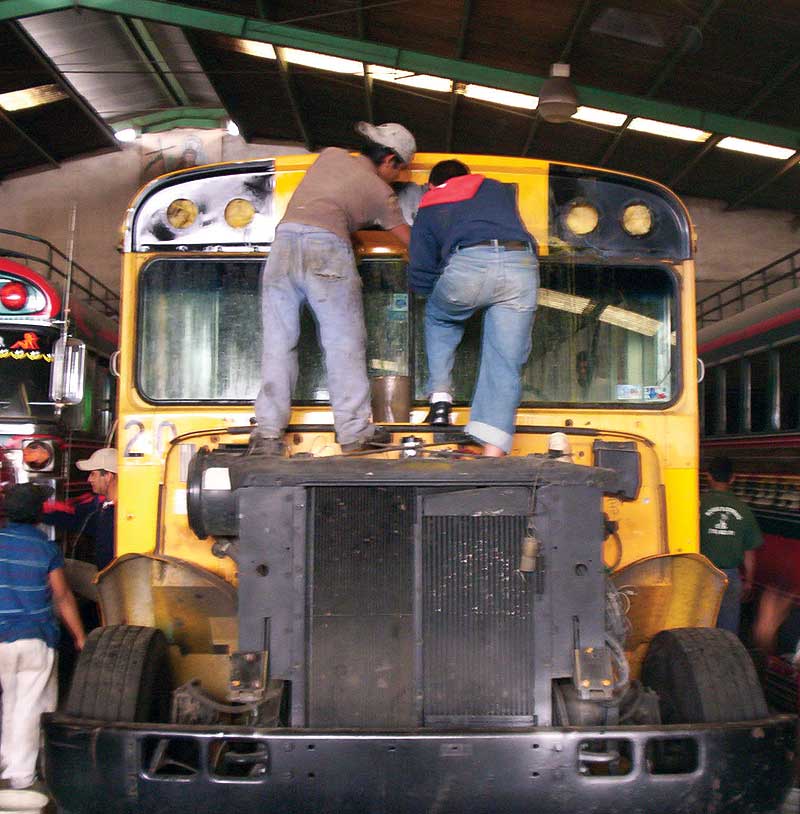
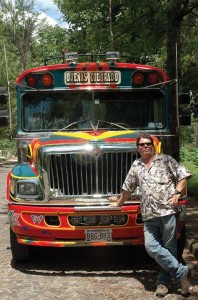
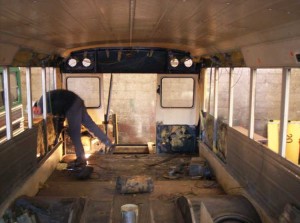
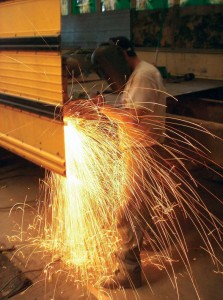
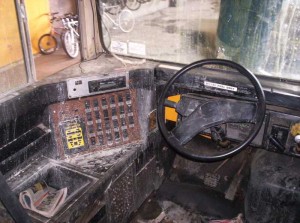
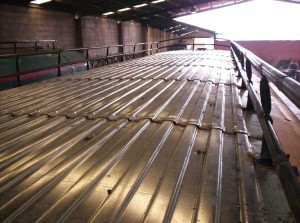
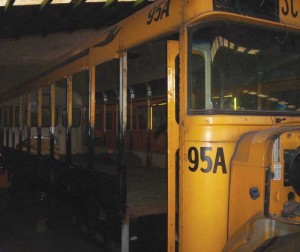
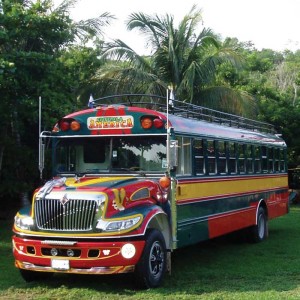
Currently driving a school bus in a town outside of Chicago Illinois, and would like to try driving the “chicken bus”. I would like to try the drive to Guatemala bring down the bus for it to become a “chicken bus”.
My dad is Mario Antonio Estrada and he is one of the guys who contrubute to the proces of making of a chicken bus he is the one who put the stickers called arrows flechas in spanish on the front and rear bumpers also the names on the front windshields
This article is great – thanks, Gwyn!
I’m actually about to begin production on a feature-length documentary about the making of a chicken bus. To learn more, go to lacamionetafilm.wordpress.com
@ Mario – Where does your dad live and work? Would he be interested in being a part of the film? I’ll be coming down to Guatemala for all of July and August 2010…e-mail me at kendall.mark@gmail.com
Pingback: los primeros dias… « a ver guate…
Hi all
I am interested in this buses can any one tell me the total cost to get one chicken bus
Thanks
my email algabal772011@yahoo.com
would like to establish contact with an individual in guatamala to be on the receiving end of a stream ob school busses. Believe I can realistically dis[patch 2 busses per month on a regular bassis from Maryland.
lets open communications. prepared to fly down for a face to face discussion to get operations open.
OK
CAN YOU GIVE ME YOUR EMAIL TO CONTACT YOU OR YOUR SKYPE
To Wm. Patterson,
Please contact me about the schoolbuses. Tel. 7762-2022.
Thanks,
Wayne
Pingback: jan steinhauer » Blog Archive » los primeros dias…
i am still waiting for any one have any idea , adders or contact details for any chicken buses factory
to Wayne i am sorry for delay what is your place code like 00xx
@Mario Estrada Torres
Estoy investigando la historia de la camioneta en Ciudad Vieja para una serie documental la que vamos a realizar en enero 2014. Me interesaria mucho hablar contigo sobre el trabajo de tu padre. Podrias contactarme por fa? jessica.winteringham@boundlessproductions.tv.
Saludos
Jessica
Pingback: Ode to the Guatemalan Bus - Revue Magazine
Pingback: Taking the chicken bus - musings
Buy used buses in Houston and reduce transportation costs. Usedschoolbusesonline.com.
I have visited Guatemala many times over the past 13 years. LOVE the buses! LOVE the people! so much so I’m hoping to be moving there in late 2023 to sleepy little Pacific Ocean village. I’ve got a bid in today in an online auction for a school bus, and if successful, will drive it from Florida to my new home. When I get there, I’ll perhaps use the bus for storage or better yet, a Airbnb type weekend rental. Only time will tell.
It’s 2023 and I realize that most all of the previous comments were left a LONG time ago. But I thought I’d try to reach Dwight Wayne re school buses. You see, I too may have connections in bringing buses to Guatemala on a regular basis. So Mr. Dwight Wayne, if you are out there, please try to contact me Mr. Rodd at 001-352-756-1543 in USA, drop me a line at my email address, hott-rodd@hotmail.com, or call my Guatemalan friend Tony (who understands English) at 4608-0009. Tony lives in Tecojate. Thank you y gracias.